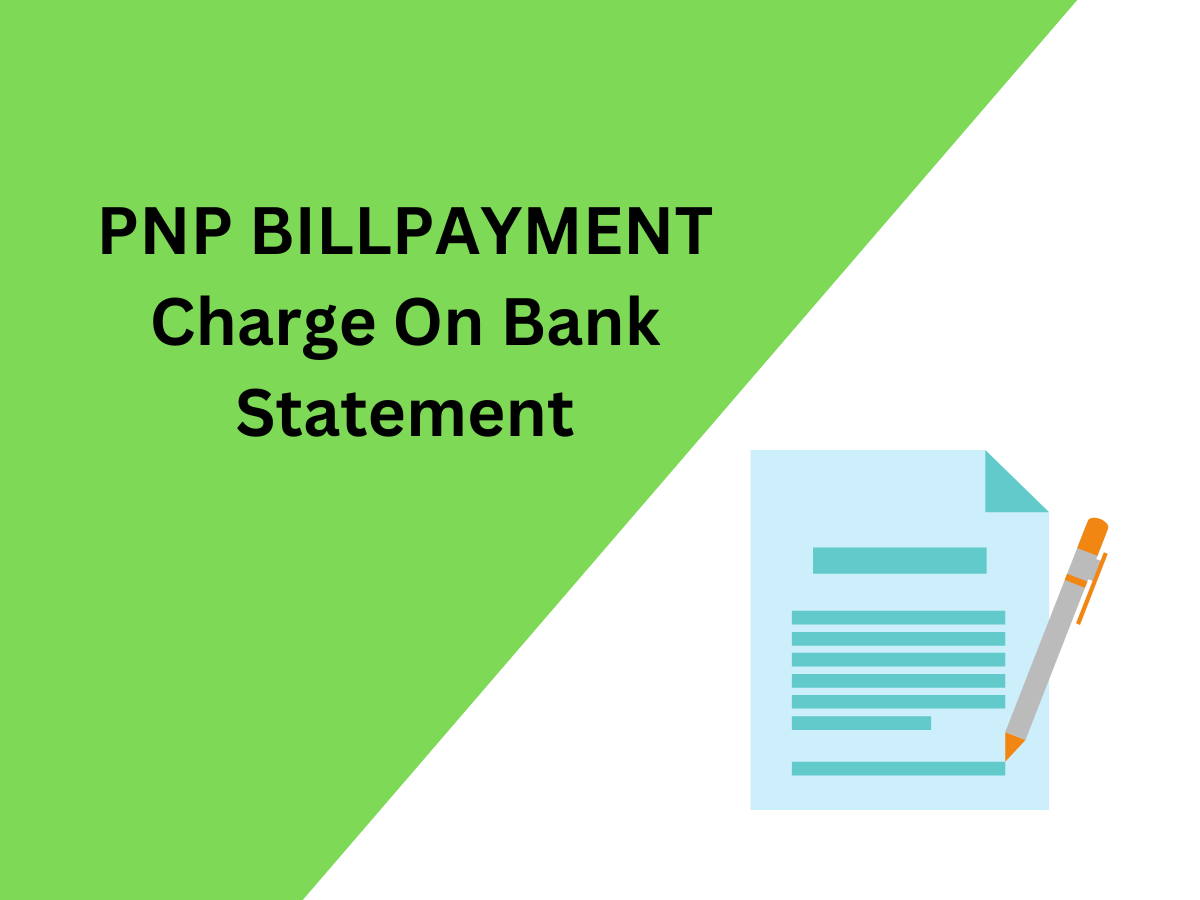
What Is the PNP BILLPAYMENT Charge On Bank Statement?
With the convenience it offers, it’s no surprise that many of us regularly find ourselves entering card details or logging into our online banking to make transactions. However, this convenience often comes with a side of confusion, especially when unidentified charges like “PNP BILLPAYMENT” appear on our bank statements. If you’ve recently noticed such a charge and are trying to decipher its origins, this article is here to demystify it for you.
What Is the “PNP BILLPAYMENT” Charge?
The “PNP BILLPAYMENT” label on your bank statement signifies a payment made to a merchant or service provider through a third-party payment processor. PNP, or Pay Now Please, is a hypothetical acronym representing a generic payment processor facilitating these transactions. In reality, the specific payment processor will have its own distinct name, but for the sake of simplicity, we will refer to it as PNP throughout this article.
The primary function of these payment processors is to act as intermediaries between the buyer and seller, ensuring the secure transfer of funds. This is why you might not immediately recognize the company name associated with the charge, as it doesn’t always directly reflect the merchant you purchased from or made a payment to.
How Did It Appear on Your Statement?
There are several scenarios in which a “PNP BILLPAYMENT” charge could appear on your bank statement:
- Online Shopping: Made a purchase from an e-commerce store that uses an external payment processor.
- Utility Payments: Paid a utility bill (e.g., electricity, water, internet) online through a system facilitated by a third-party.
- Subscriptions: Signed up for a subscription service where the billing is managed by a payment processing partner.
- Miscellaneous Services: Made online payments for services such as insurance premiums, educational courses, or membership fees which utilize third-party billing services.
Understanding the broad range of services that could result in such a transaction is crucial in pinpointing the exact source of the charge.
Investigating a “PNP BILLPAYMENT” Charge
Upon discovering an unfamiliar charge on your bank statement, the first step is not to panic. There’s a structured approach you can take to investigate and resolve this matter efficiently:
1. Review Your Transactions
Carefully go through your recent purchases and payments. Match them against the “PNP BILLPAYMENT” charge by date and amount. Consider online purchases, bill payments, and any automatic renewals of subscriptions you may have set up.
2. Check Email Confirmations
Search your email for any transaction confirmations or receipts that match the date and amount of the charge. Merchants usually send a summary of your purchase or payment, which can help identify the transaction in question.
3. Contact Customer Service
If after reviewing your own records you’re still unable to recognize the charge, the next step is to reach out to the customer service of the payment processing company (marked as “PNP” in your bank statement). They should be able to provide you with information about the merchant and possibly the nature of the transaction.
4. Consult Your Bank
Should the previous steps yield no results, contacting your bank can offer another layer of investigation. Your bank may have additional details on the transaction or advice on how to proceed, especially if there’s a suspicion of fraudulent activity.
Preventive Measures
To avoid future confusion and ensure the security of your transactions, consider implementing the following practices:
- Monitor Bank Statements: Regularly review your bank statements to catch and address any discrepancies early on.
- Use Trusted Merchants: Whenever possible, make purchases from reputable merchants and platforms you trust.
- Keep Records: Maintain a record of your transactions, including confirmation emails and receipts, to easily verify charges later.
- Secure Online Payments: Ensure your online payments are secure by using encrypted connections (look for HTTPS in the web address) and avoiding public Wi-Fi for transactions.
Conclusion
While the “PNP BILLPAYMENT” charge on your bank statement might initially cause alarm, understanding that it represents a transaction made via a third-party payment processor is the first step in demystifying it. By diligently reviewing your transactions, keeping precise records, and following up with customer service when necessary, you can swiftly ascertain the origin of these charges. Furthermore, adopting preventive measures will not only help in managing your future transactions more effectively but also contribute towards safeguarding your financial health against potential fraud.
In the realm of online shopping and bill payments, being financially literate and proactive in monitoring your transactions goes a long way. Remember, the power to manage and understand your finances is in your hands, and staying informed is key to navigating the complexities of modern-day banking and online transactions.